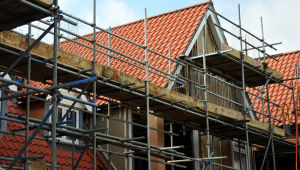If the government had built 100,000 social rent homes each year over the past two decades, renters could also have benefited from an extra £1.8bn in disposable income, analysis from the Local Government Association has concluded.
The government currently has a commitment to build 300,000 new homes each year by the mid-2020s, but spreading this target out over the past 20 years could have saved both the government and renters significant sums, according to the analysis done in partnership with Capital Economics.
Overall, government would have had to borrow an additional £152bn (in 2017 prices) to build 100,000 social rent homes each year between 1997-2017, the LGA said.
But the report out today said building 100,000 annually would have meant all housing benefit claimants living in the private rented sector could have moved to cheaper social rent homes by 2016.
Every pound spent on construction output stimulates an increase of £2.84 in GDP, according to research referenced in the report.
On average, private sector tenants receive £111 per week in housing benefits in England, compared with £92 per week for those with a social rent landlord, the research found.
Over the past decade, a rising proportion of housing benefit caseloads in the private rented sector has cost the government nearly £7bn in additional benefits in real terms, the study found.
With the extra homes available, more benefit claimants would have moved to social rent homes, saving them £1.8m in rent payments, the report said.
If councils are to “truly fulfil their historic role as major housebuilders, then the government needs to allow councils to keep 100% of right-to-buy receipts and set discounts locally to replace every home sold,” the LGA said.
Martin Tett, LGA housing spokesperson, said: “Every penny spent on building new social housing is an investment that has the potential to bring significant economic and social returns.
“Now is the time to reverse the decline in council housing over the past few decades. This is the only way to help families struggling to meet housing costs, provide homes to rent and reduce homelessness, while also providing economic growth and lowering the housing benefit bill.”
Tett noted that the last time councils were building the necessary amount of homes was in the 1970s. Last year, the government delivered 222,000 new homes – the highest number in a decade, but still below the target of 300,000.
Polly Neate, chief executive of the housing charity Shelter, said: “As well as cutting the benefit bill and driving down homelessness, a stable supply of social housing would be a national asset.
“It would give a step up to families struggling in expensive and unstable rented accommodation, enabling them to put down roots and plan for the future. Children could stay in the same school, support networks and communities could flourish, and society as a whole [would] be better off.”
The Ministry of Housing, Communities & Local Government has been approached for comment.
Recent analysis from the Chartered Institute of Housing found that 165,000 social rent homes have been lost since 2012.
Read Neil Merrick’s feature for PF, in which he considers whether councils can be at the forefront of a social housing renaissance.











